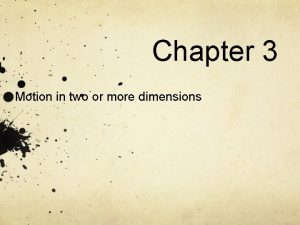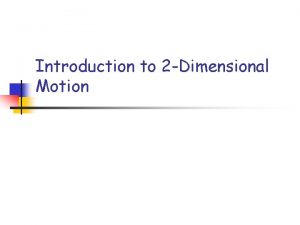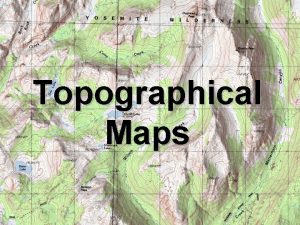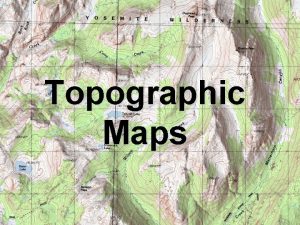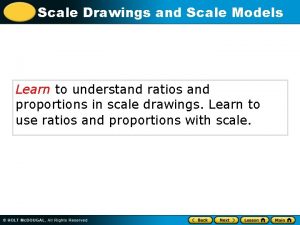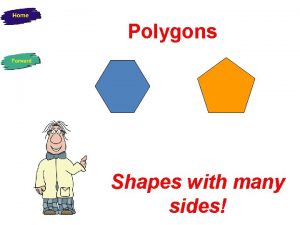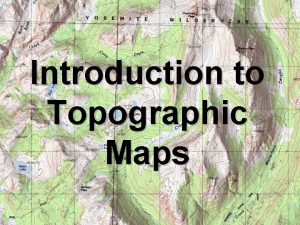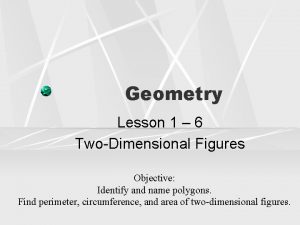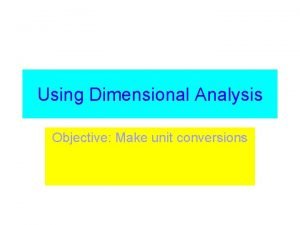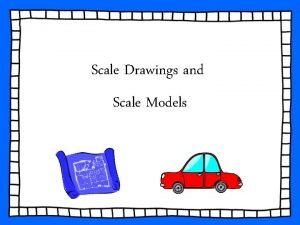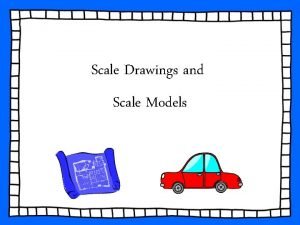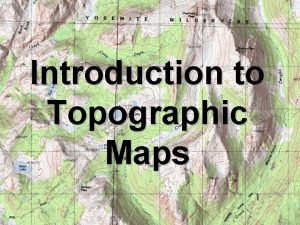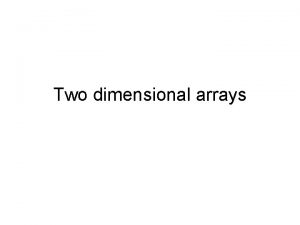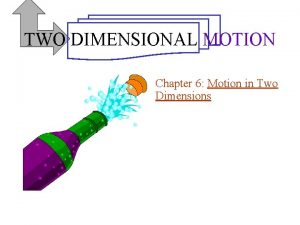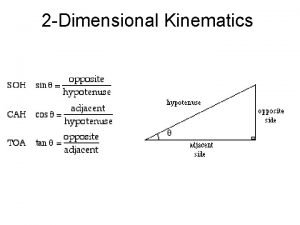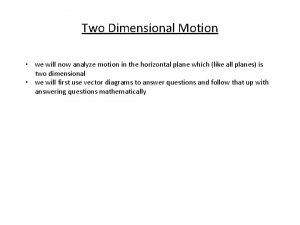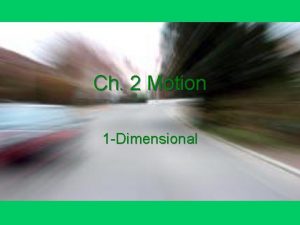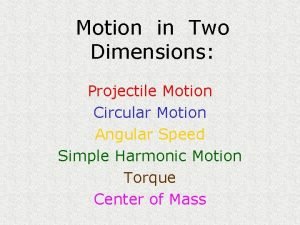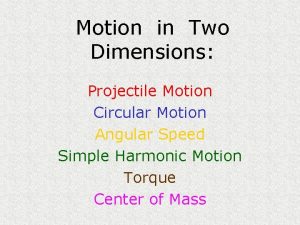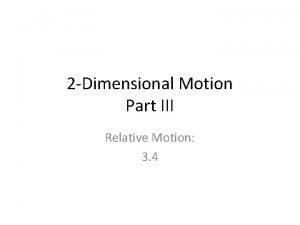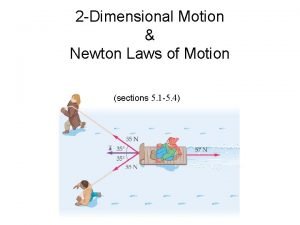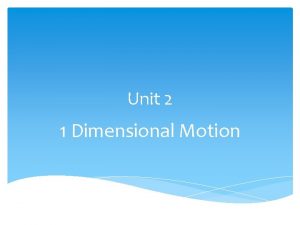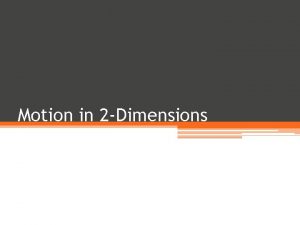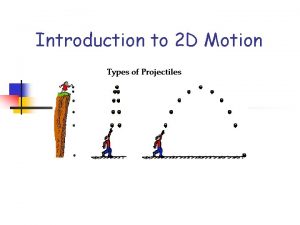Two Dimensional Motion What is two dimensional motion




















- Slides: 20

Two Dimensional Motion

What is two dimensional motion? • Motion going on two of the three axes. • In math terms the axes are x, y and z. • In laymen’s terms that is forward and back (y-axis), left and right (x-axis), and up an down (z-axis).

Examples of two dimensional motion • Driving in a car goes in two-dimensional motion because you go forward and back and left and right but not up and down. • Throwing a ball is two dimensional motion because it goes up and down and forward and back, but not left and right. • Moving a mouse on a computer screen goes up & down, and left & right but not forward and back.

Resultants • A resultant vector is one vector representing two or more other vectors. • In one dimensional motion, if the two vectors are going the same direction the resultant is the sum.

Resultants when the vectors are perpendicular If you have some object And someone pushes up on it While another person pushes to the right Resultant Vector The box will move diagonally, this is its resultant.

Resultant of perpendicular vectors • If the vectors are the same units (meaning they are both displacement or they are both velocity etc. ) the resultant can be represented by a straight line. • The order in which the vectors occur does not matter when determining the resultant. • To accurately determine the magnitude and direction of the resultant you can use the tipto-tail method.

Resultants • Normally when we draw the vectors we put the tails of both vectors at the origin The resultant goes from the point of origin diagonally Resultant First Vector Second Vector

Tip-to-tail method • If you draw the tail end of the 2 nd vector starting from the tip of the first vector the resultant will go exactly from the point of origin to the tip of the 2 nd vector 1 st vector Resultant

More on graphical tip-to-tail • If you have the proper equipment, you can accurately measure the magnitude (value) of the resultant and the angle the resultant makes. • If you make an approximate drawing you can make a logical guess as to what the magnitude and angle of the resultant should be.

Naming an angle the resultant makes Given the compass And the resultant We cannot just say the angle goes southeast, because it could be. . . Or. . . North Therefore we must be more specific East West This angle Resultant This angle South

How to name the angle of the resultant vector • In order to form an angle we need two lines, one line will be the resultant vector. The second line will be some reference line. • The reference line will be named secondly, we will say the resultant goes some direction (North, South, East, West, Up, or Down) of the reference line.

Example of naming an angle • If the reference line is East Resultant And the resultant goes South from East Then the angle the resultant makes is called South of East

Practice naming angles • If this is my reference line And this is my resultant North West East South What would be the name of the resultant’s angle? West of South

Another example of naming an angle If the reference line is West And the resultant goes up from West. Resultant West Then the angle the resultant makes is called up from West. * In many cases North, South, East, West, and all angles in between are called the horizontal so this angle may be called above the horizontal.

Determining Magnitude and Direction of Resultants with trigonometry

A warning and some terminology • Make sure your calculator is set in degrees, not radians!!! • magnitude of a vector- the number value • direction- correctly named angle

Use tip to tail method • two perpendicular vectors and the resultant will always form a right triangle. • Always remember to draw out your triangle, if you try to take a shortcut mistakes are common • Using trigonometry you can calculate everything you need.

Important Trig concepts and equations • The sum of all angles in ANY triangle equal 180 o • The following for right triangles ONLY • Pythagorean theorem a 2+b 2= c 2 (c is the hypotenuse) • SOHCAHTOA • sin = opp / hyp; cos = adj / hyp tan = opp/adj

More than one way • Law of sines/cosines may be used instead of SOHCAHTOA • sin a / A = sin b / B = sin c / C • C = (A 2 +B 2 – 2 AB (cos c) • There is no real advantage, just a different way to get the same answer.

Example • If you walk 4. 0 m N and 6. 0 m E, what is magnitude and direction of your resultant? 6 m. E 4 m. N 7. 2 m, 56 o E of N
 A circular motion is one dimensional
A circular motion is one dimensional Sin 37
Sin 37 Two dimensional motion
Two dimensional motion Two dimensional motion definition
Two dimensional motion definition 1-6 two dimensional figures
1-6 two dimensional figures A topographic map is a two dimensional model
A topographic map is a two dimensional model A topographic map is a two dimensional model
A topographic map is a two dimensional model Kano sansetsu old plum
Kano sansetsu old plum Understanding scale drawings
Understanding scale drawings Shape with 6 angles
Shape with 6 angles A topographic map is a two dimensional model
A topographic map is a two dimensional model 1-6 two dimensional figures answer key
1-6 two dimensional figures answer key Eysenck’s two-dimensional scheme
Eysenck’s two-dimensional scheme Contoh program array 2 dimensi python
Contoh program array 2 dimensi python What are two dimensional analysis of objectives
What are two dimensional analysis of objectives 2 dimensional media
2 dimensional media Kelly enlarged the area of a photograph to 250
Kelly enlarged the area of a photograph to 250 What is a scale drawing
What is a scale drawing A topographic map is a two dimensional model
A topographic map is a two dimensional model Force system in engineering mechanics
Force system in engineering mechanics The principle of design that indicates movement
The principle of design that indicates movement


